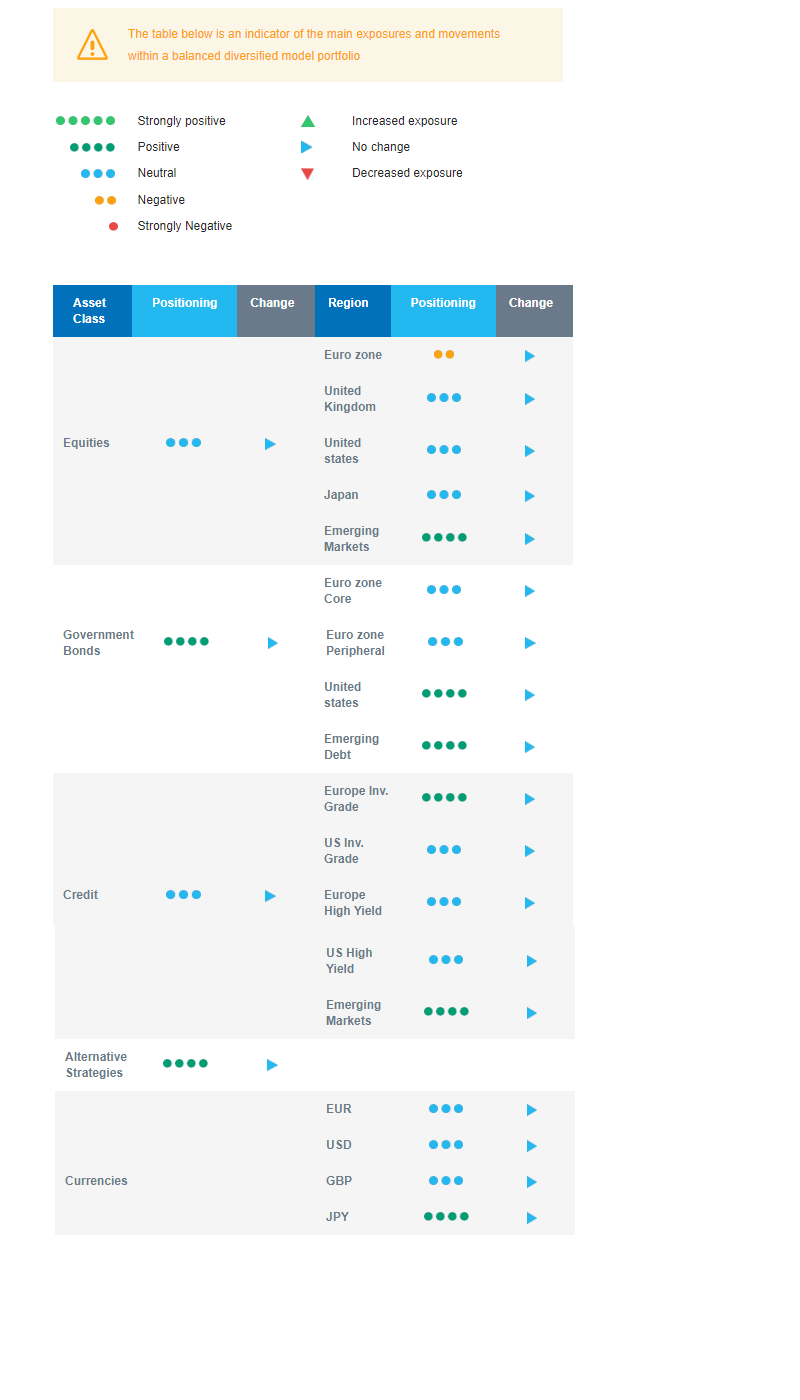Last week in a nutshell
- Wrapping up hawkish central bank meetings in June, the Bank of England and the Norges Bank surprised with a 50bp rate increase each.
- In his semi-annual testimony to Congress, Fed Chair Jerome Powell repeated that more rate hikes would be needed to tame inflation.
- The highest-level US visit to China in five years had limited objectives and limited outcomes: Open for dialogue but not much for negotiations.
- Preliminary purchasing manager surveys confirmed sluggish growth at the end of H1 on both sides of the Atlantic.
What’s next?
- The euro zone and its key member countries will publish preliminary data on inflation for the month of June as the ECB maintains a hawkish tone.
- The US will publish a series of data on the real estate market including house price index, new home sales and mortgage applications.
- The very timely theme of this years’ ECB Forum in Sintra is “Macroeconomic stabilisation in a volatile inflation environment”.
- The EU summit will gather in Brussels as Sweden hands over the presidency to the Kingdom of Spain.
Investment convictions
Core scenario
- Financial markets have been resilient during the first half of the year, reflecting a better growth/inflation mix than expected by consensus at the start of 2023.
- During the second half, however, we expect a less supportive market environment as the gradual economic slowdown goes on and central banks keep a hawkish tilt even though this monetary tightening cycle is already unprecedented in recent history.
- June has seen central banks from Australia, Canada, England, Norway to the euro zone and the US add more tightening, via rate hikes and rhetoric.
- Our main scenario incorporates slow growth, both in the US and the euro zone. The magnitude of the market downside risk will depend on the upcoming economic slowdown. In our central scenario, it should be limited in a tight trading range.
- In the euro zone, the expected next stage of lower economic growth and increasing cyclical worries have likely already started. Deterioration in economic data has been widespread. After peaking in February, economic surprise indicators have fallen sharply into negative territory.
- In Emerging markets, Chinese pent-up demand was a positive point but a strong sustainable momentum behind the re-opening has not materialised. Clearly, this is not the post-pandemic recovery the world was betting on.
Risks
- The steepest monetary tightening of the past four decades has led to significant tightening in financial conditions. Financial stability risks have resurfaced recently in the US but appeared to have stabilised.
- After the dramatic drop in growth surprises in all major regions, the outlook is becoming less supportive.
- Markets appear to have a second thought on the “terminal rate” of several central banks, as their inflation-taming job is likely not finished yet. We believe the outlook for growth is at risk.
Cross asset strategy
- We have a neutral equities allocation, considering the limited upside potential. A positive, softish landing, economic scenario seems already priced in for equities, thereby capping further upside. We focus on harvesting the carry and are slightly long duration.
- Within a neutral equities positioning, we have the following convictions:
- In terms of regions, we believe in Emerging markets, which should benefit from improving economic and monetary cycles vs developed markets.
- Our positioning on equities became somewhat more defensive in recent weeks and we reduced exposure on euro zone equities as pricing has become too complacent in our view.
- At this stage of the cycle, we prefer defensive over cyclical names, such as Health Care and Consumer Staples. The former is expected to provide some stability: No negative impact from the war in Ukraine, defensive qualities, low economic dependence, innovation, and attractive valuations. The latter, pricing power.
- Longer-term, we favour investment themes linked to the energy transition due to a growing interest in Climate and Circular Economy-linked sectors. We keep Technology in our long-term convictions as we expect Automation and Robotisation to continue their recovery from 2022, albeit at a reduced pace.
- In the fixed income allocation, we have a slightly long duration positioning:
- We are positive on US government bonds as the slowdown is advancing in the region. We do not expect a Fed easing as early as the markets do. We are neutral euro zone duration.
- We are overweight investment grade credit: A strong conviction since the start of 2023 as carry and duration offer a cushion and we focus on European issuers.
- We are more prudent on High Yield bonds as strong tightening credit standard should act as headwind and the buffer for rising defaults has decreased in recent months.
- We are buyers of Emerging bonds, which continue to offer the most attractive carry. Dovish central banks should be supportive. Investor positioning is still light post-2022 outflows. The USD is not expected to strengthen.
- We have exposure to some commodities, including gold and commodity-related currencies, including the Canadian dollar.
- Further to the currency strategy, we hold a long position in the Japanese Yen (vs. the US dollar), a good hedge in a potential risk-off environment.
- On a medium-term horizon, we expect Alternative investments to perform well.
Our Positioning
The overall equity strategy is neutral, with a barbell approach: overweight Emerging markets mitigated by an underweight on euro zone. We are neutral elsewhere. The exposure to the US market comes with a derivative protective strategy as sentiment, positioning, and market psychology are stretched. Markets are increasingly reflecting our soft-landing outlook, limiting the performance potential going forward. Accordingly, our “late cycle” asset allocation strategy is axed around defensive sectors, credit, and long duration.

